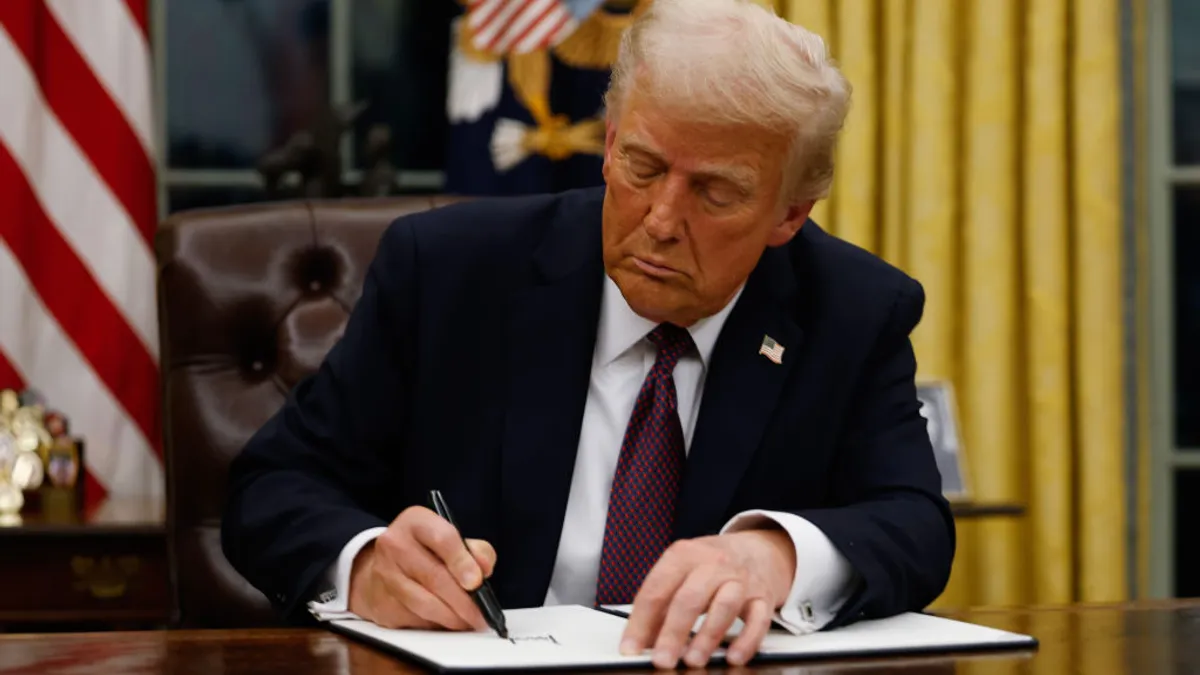Dive Brief:
- The number of international applicants to U.S. graduate degree programs fell 3.7% between fall 2016 and fall 2017, even as several prominent programs known for their research saw an uptick, according to a new report from the Council of Graduate Schools. Enrollment among U.S. citizens and permanent residents in graduate school rose 1% during the period.
- International students comprised 22% of the first-time graduate student population in fall 2015, 21.1% in fall 2016 and 20.3% in fall 2017. There were proportionally more first-time international graduate students at private nonprofits (24.2%) than public colleges (19%) in fall 2017. The latest decrease is the second since 2003, with the group's enrollment still growing at a five-year rate of 4.7%.
- Inside Higher Ed noted that the current climate in the U.S. around immigration could be impacting students' desire to study here. Another potential cause of the decline is that international students are looking beyond the U.S. for college. The minimal increase among U.S. citizens and permanent residents is attributed to a thriving economy.
Dive Insight:
The Wall Street Journal reported earlier this week that a drop in international student applicants played an important role in an overall decline in applications to U.S. MBA programs, which fell about 7% this year. It was the fourth-consecutive year total MBA applications dropped, with elite institutions beginning to be affected as well.
Declining enrollment is a key issue at colleges and universities across the country. The Association of MBAs last year ranked student recruitment as the second-biggest concern for business school leaders, and Inside Higher Ed found that admissions directors across institution types and sizes needed one or two more months beyond the traditional May 1 deadline to meet their enrollment targets. The number of adult learners has dropped and declining enrollments at community colleges are expected to continue.
International students, who for some time have been a predictable mainstay of graduate admissions, may now need to be recruited differently. The National Association for College Admission Counseling offers several strategies to help, and advises U.S. institutions to focus international student recruiting efforts on untapped markets.
Diverse Issues in Higher Education noted a few bright spots in the Council of Graduate Schools' report. The share of underrepresented minority first-time graduate students rose slightly. Women continued to comprise the majority of first-time graduate students at the master's degree and doctoral levels. And first-time enrollment of Hispanic and Latino men and women rose 5.6% for the last two years and are tracking at a rate of 8% over 10 years.












